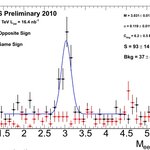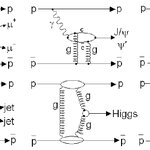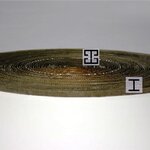Physics

In my friend Peter Woit's blog I read an interesting account of an interview to Greene and Kachru, two leading string theorists. Here is an excerpt, which Peter got from the World's Science Festival:
John Hockenberry, the panel’s moderator, asked Greene if he thought experimental evidence would come during his lifetime.
“I’d be surprised,” said Greene.
“And in your lifetime?” Hockenberry asked Kachru.
“…I’d be surprised,” conceded the young physicist reluctantly.
Chris Oakley, in the comments thread, immediately argued that the obvious follow-up question should have then been, "Why the f***…

"I do not understand why journalists and others want to know about the latest discoveries in physics even when they know nothing about the earlier discoveries that give meaning to the latest discoveries"
Richard Feynman (quoted by G.F.Giudice, "A Zeptospace Odyssey", Oxford University Press 2010)

Ah, the joy to see bosons in our first 7-TeV proton-proton collisions at LHC! The CMS experiment has released two days ago its first results on W and Z bosons, plus many other riches. Of course, these plots are only demonstrative, since the statistics is still ridiculously poor if compared with the wealth of data available at the Tevatron. But still, these are collisions at 3.5 times more energy, and the machine is doubling its luminosity every week or so, so I expect that very soon the distributions will stop looking rough and will start containing real information, to be converted in…

It is known (G. Quznetsov, Higgsless Glashow's and Quark-Gluon Theories and Gravity without Superstrings, Progress in Physics, 2009, v.3, 32-40) that probabilities of pointlike events are defined by some generalization of Dirac's equation.
One part of such generalized equation corresponds to the Dirac's leptonic equation, and the other part corresponds to the Dirac's quark equation. The quark part of this equation is invariant under the oscillations of chromatic states.
And it turns out that these oscillations bend space-time so that at large distances the space expands with acceleration…

It is Sunday morning, and I am about to leave for a day on the beach, the first of this busy 2010; so this post will be shorter than I would like it to be... There would be lots to say about exclusive physics at colliders. But I still want to share with you a figure extracted from a recent 4-page preprint article by James Pinfold, who nicely summarizes the signals and searches for exclusive processes at the Tevatron proton-antiproton collider.
As you probably know, when proton and antiprotons -bags of quarks and gluons- are brought one against the other at light speed, most of the energy…
After two years spent saying that Italy has a strong economy and is doing better than the rest of Europe, and strongly criticizing whomever tried to warn that the economical crisis was not over yet, the Italian government led by Silvio Berlusconi has made a sharp turn. The buzzword is now "avert the Greek risk", and while painting dreadful scenarios Berlusconi and his ministers have crafted a finance law that drags over 30 billion euros mostly from salaries. The anti-Robin-Hood strikes again.
The thing would be sad by itself, but some of the ancillary rules contained in the new law will have…

I just received by Matin Durrani, editor of Physics World, a link to a fun game, and thought I'd give it a try. The game consists in guessing which among two titles of physics papers is right, and which one is instead artificially generated by the snarxiv, a witty endeavour which aims at showing just how arcane and odd-looking may physics abstracts be.
Try it for yourself here, it is not as easy as it sounds, but at least it is fast and immediate to play. I cannot avoid bragging about my own result here, which is more or less in line with my actual qualification as a professional physicist…

Blogs by physicists working in large scientific collaborations are looked with suspicion by the management, because they are considered -wrongly so- a potential source of leaks. Large experiments such as CDF at Fermilab or CMS at CERN have been careful to write specific guidelines, where they basically prevent bloggers to speak about anything that happens within the experiment, and to even restrain from discussing public material until the latter has been presented at an international conference.
Despite feeling that this is a profoundly flawed attitude -we work for the advancement of human…

Researchers in China have created an electromagnetic absorbing device for microwave frequencies. The device, called an “omnidirectional electromagnetic absorber”, is made of a thin cylinder comprising 60 concentric rings of metamaterials and is capable of absorbing microwave radiation, so they compared it to an astrophysical black hole which soaks up matter and light.
The research published in New Journal of Physics outlines how the researchers utilized the special properties of metamaterials, a class of ordered composites which can distort light and other waves. Qiang Cheng and…

Not even a week has passed since the announcement by Carlo Rubbia that the ICARUS experiment is collecting its first neutrino interactions, that another experiment at the Gran Sasso Laboratory claims the international scene of neutrino physics. And this time with a real reason. Not the observation of the first events - the experiment in question, OPERA, has been active for more than three years now- but for the observation of a fundamental process that had never been seen before!
It is official: the OPERA experiment (above, in a sketch) has found its first tau lepton in one of its bricks (a…